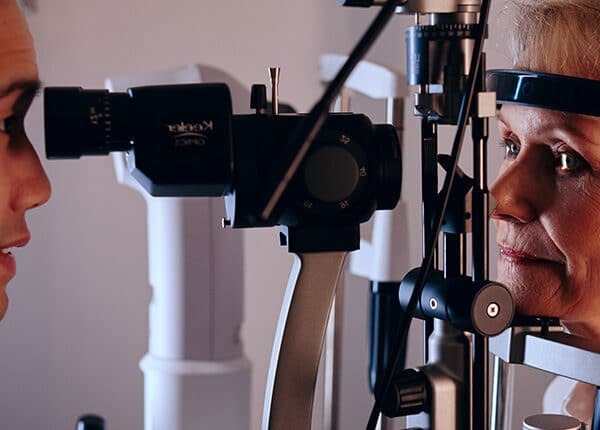
Acanthamoeba Keratitis: The Number One Eye Disease to Avoid
6 JUN 2022
Eye health
The extreme flooding events in regional Australia have raised alarm among eye care professionals.
Increased floods mean increased contact with polluted flood and storm water. Doctors are now concerned that; and could potentially increase the amount of eye infections caused by the water-borne parasite acanthamoeba.
Although the microbe rarely targets humans, when it does, the infection is painful, debilitating and difficult to treat. Contact lens wearers are most at risk, and the potential rise of eye infections has motivated eye doctors to stress again the importance of contact lens hygiene.
Acanthamoeba keratitis (eh-can-tha-mee-bah kehr ah tie-tus) is a very rare, very serious, infection of the eye that can lead to visual impairment or blindness if not treated.
Sufferers experience severe pain in their eye, seemingly out of nowhere. Typically, the person with the infected eye complains of redness, inability to see and sensitivity to light. The pain can be so excruciating that those infected are often forced to spend weeks in darkened rooms. In the worst cases, the infection causes permanent damage to the cornea and eye tissues, leaving sufferers blind in one or both eyes.
What is an acanthamoeba?
‘Acanthamoeba’ is the name biologists have given to a particular type of microscopic parasite. It is a single-cell organism found almost everywhere in nature: in dust, soil, seawater, swimming pools and spas, freshwater, tap water, bottled water, and sewage.
What is keratitis?
‘Keratitis’ is the medical term for inflammation of the cornea — the outer layer of the eye. It can be as mild as a general irritation, redness, and light sensitivity, or as serious as developing a corneal ulcer leading to blindness.
Acanthamoeba keratitis is serious
Acanthamoeba keratitis is a painful inflammation of the cornea caused by a parasite infection. It is very serious and fortunately very rare.
Acanthamoeba keratitis occurs most among contact lens wearers who do not practice proper contact lens hygiene. The contact lens infection is a consequence of not properly washing your hands when handling your lenses, using tap water to clean your lenses or case, or wearing your contact lenses while swimming or showering.
If the acanthamoeba organism contacts the eye from a contaminated contact lens or from water, it attaches to the cells on the surface of your cornea, and slowly destroys the layers of the cornea. The infection can affect both eyes, but it usually affects one.
It is important to point out: contact lenses are extremely safe.
Acanthamoeba keratitis is very rare. It is estimated that the incidence of the acanthamoeba infection in developed countries is about one to 33 cases per million contact lens wearers.
Acanthamoeba Keratitis Symptoms
It can take several days to several weeks for symptoms to show up after the acanthamoeba enters your eye. Most commonly, it affects only one eye.
You should see your Eyecare Plus optometrist or your general practitioner immediately if you or your child experience any of these symptoms…
- Blurred vision or vision loss
- Cloudy or dirty-looking cornea
- Excruciation eye pain
- Eye redness
- Sensation of something in the eye
- Sensitivity to light
- Watery eyes
- Whitish rings on the surface of the eye
If you are a contact-lens wearer and you experience these symptoms, stop wearing your contact lenses and switch to glasses. Also be sure to tell your eye doctor or GP that you wear contact lenses, it could be the essential clue they need to make the diagnosis of acanthamoeba keratitis.
Treatment
Eye care professionals and doctors admit that acanthamoeba keratitis is difficult to treat.
It is vital to have an acanthamoeba infestation diagnosed in the early stages. It can be a race against time before the acanthamoeba invades more deeply into the cornea and causes permanent tissue damage.
Antiseptic drops may be used in the early stages of infection. The antiseptic drops fight microorganisms, but there are no specific ‘anti-acanthamoeba’ drops available. The drops are applied to the surface of the eye, an acanthamoeba keratitis treatment that can last over six months. If the infection doesn’t improve with the eye drops, surgery may be required.
If you have any questions about eye diseases such as Acanthamoeba Keratitis, contact your local Eyecare Plus optometrist as they are the best and most informed to assist you.
Book an appointment with
your local Eyecare Plus
Optometrist today.

